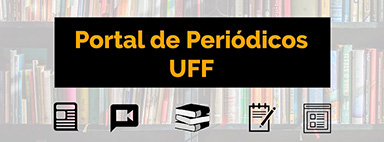Literature and cinema: cinemarographic translation in a poem by Paula Tavares
DOI:
https://doi.org/10.22409/abriluff.v14i29.53186Keywords:
semiotics, tradition, angola, poetry, cinemaAbstract
This article focuses on post-independence Angolan literature and its relationship with cinematographic artistic expressions. It is in Ana Paula Taraves’ poetry, full of innovation and tradition, that we will investigate the forms of (re)writing of semiotic artistic elements within the literary text. While seeking contact with ancestral inspirations, Paula Tavares builds a modern poetics, which uses literary aesthetics and, in the case of the poem analyzed here, cinematographic, to build meaning. Based on the Semiotics of Culture precepts, we understand that the artistic text has its own language, based on its own rules and demands, and it is through this perspective that the maintenance of the dialogue between cultures is proposed. For this, we use the ideas of Lotman (1978), Diniz (1999), Plaza (2003), Barbosa (2009) e Machado (2001; 2007).
Downloads
References
AVELLAR, José Carlos. O chão da Palavra: cinema e literatura no Brasil. Rio de Janeiro: ROCCO, 2007, p. 76.
AVILA, Mara Regina. Pela poesia de Ana Paula Tavares: vozes e ecos de Angola em África. Rio Grande, 2010.
BARBOSA, Alexandre. “As ilusões da modernidade”. In: A metáfora crítica. As ilusões da modernidade. São Paulo: Perspectiva, 2009. p. 13-37.
CHABAL, Patrick. Vozes moçambicanas - Literatura e nacionalidade. Tradução de Ana Mafalda Leite. Lisboa: Vega, 1994, 1a ed.
CHKLÓVSKI, V. “A arte como procedimento”. In: Teoria da Literatura: formalistas russos. Trad.: Ana Mariza Ribeiro Filipouski, Maria Aparecida Pereira, Regina L. Zilberman e Antônio Carlos Hohlfeldt. Porto Alegre: Globo, 1973.
DINIZ, Thais Flores Nogueira. Literatura e cinema: da semiótica à tradução cultural. Ouro Preto: Editora UFOP, 1999.
JAKOBSON, Roman. Linguística e Comunicação. Trad. Izidoro Blikstein; José Paulo Paes. São Paulo: Cultrix, 1969.
KINOKS. Nós. Revista Kinofor, 1922.
LOTMAN, Iuri. A estrutura do texto artístico (trad. M. Carmo V. Raposo e A, Raposo). Lisboa: Estampa. 1978.
MACHADO, Irene. Linguagem e Militância: o cine-documentário de Dziga Vertov. Revista OLHAR, ano 03, nº 5-6, jan-dez de 2001.
MACHADO, Irene (org.) Semiótica da Cultura e Semiosfera. FAPESP, 2007.
PIÇARRA, Maria do Carmo. Angola: (Re-)Imaginar o Nascimento de uma Nação no Cinema Militante. Journal of Lusophone Studies 3.1, 2018.
PLAZA, Julio. Tradução Intersemiótica. São Paulo: Ed. Perspectiva, 2003.
STAM, Robert. Introdução à teoria do cinema. Campinas: Papirus, 2003.
TAVARES, Ana Paula. Ritos de passagem. Luanda: União dos escritores Angolanos, 1985.
VASCONCELOS, Raíra Costa Maia. Entre o estranhamento e a carnavalização: considerações sobre as relações de espaço-sujeito em Os transparentes, de Ondjaki. Revista Investigações, vol. 33, nº 1, 2020.
VASCONCELOS, Raíra Costa Maia. Timbre e poesia: um diálogo entre Webern e Augusto de Campos. Revista Graphos, vol. 16, n° 2, 2014.
VERTOV, Dziga. O amor pelo homem vivo. Iskusstvo. Kino. 1958.
Downloads
Published
How to Cite
Issue
Section
License
Copyright (c) 2022 ABRIL – NEPA / UFF

This work is licensed under a Creative Commons Attribution-NonCommercial 4.0 International License.
I authorize the journal Abril - NEPA/UFF to publish the paper of my authorship/responsibility that I now submit, in case it is accepted for online publication.
Moreover, I declare that this contribution is original, that it was not submitted to any other editor for publication, and I sign the present declaration attesting the truth of all its contents.
The copyright of the works published at the virtual space of the journal Abril - NEPA/UFF are automatically entitled to the journal. Their total or partial reproduction is conditioned to the authors' citations and publication data.

Abril is licensed under a Creative Commons - Attribution-NonCommercial 4.0 International (CC BY-NC 4.0).









